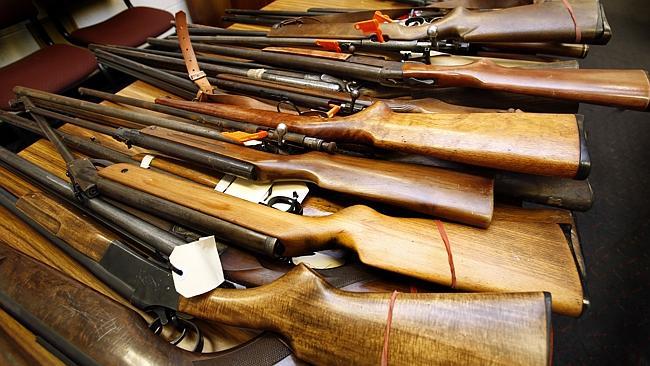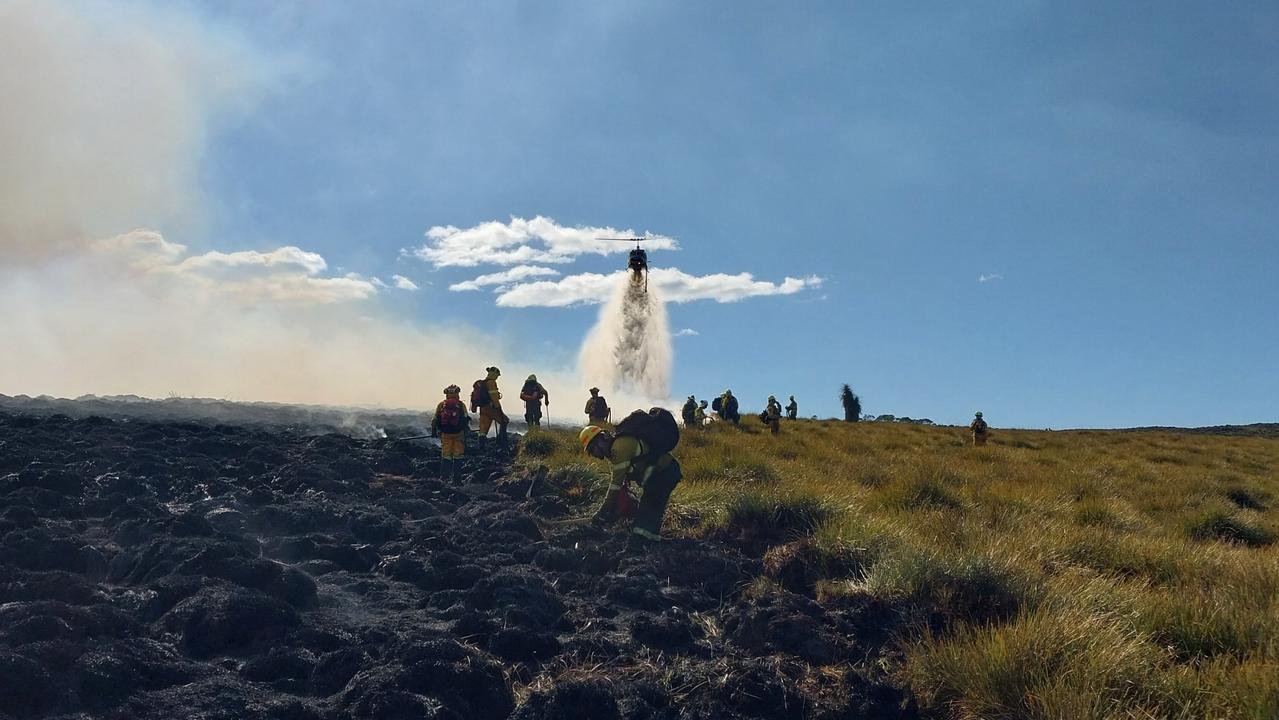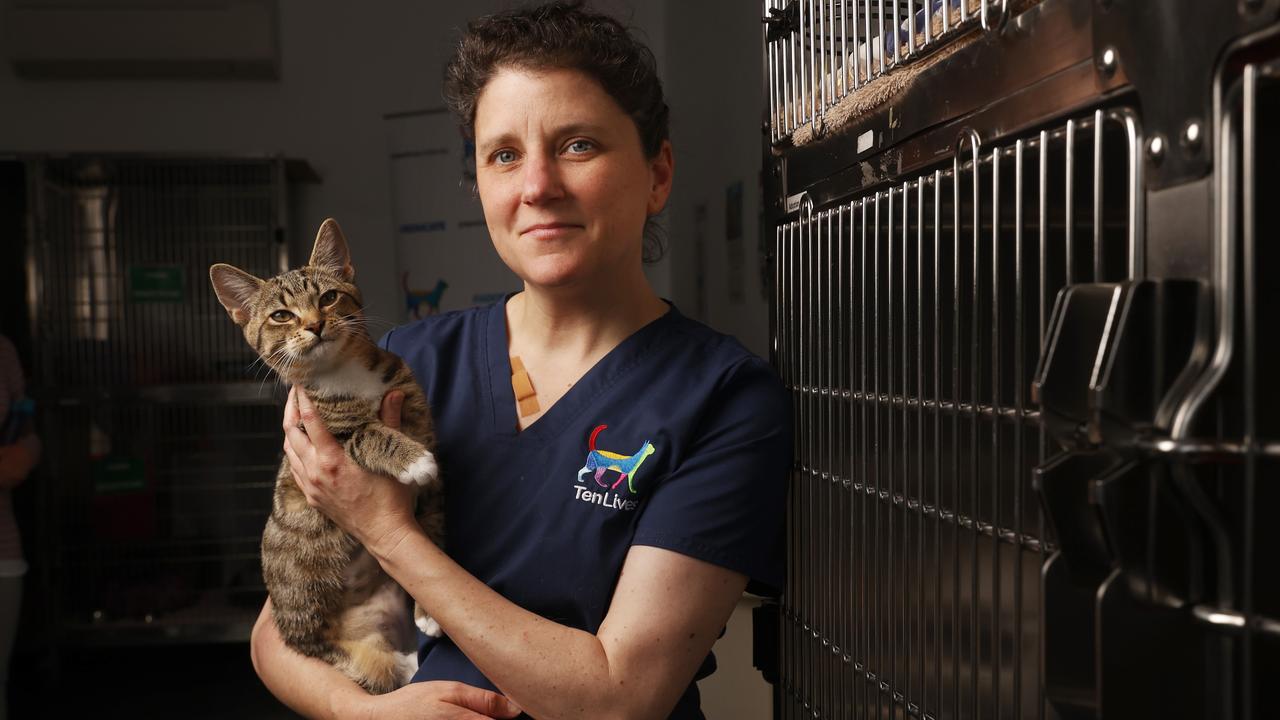Spike in number of guns coming into Tasmania
ALMOST 1500 extra firearms have come into Tasmania over the past year — a massive jump from the previous 12 months when there were just 57.

Tasmania
Don't miss out on the headlines from Tasmania. Followed categories will be added to My News.
ALMOST 1500 extra firearms have come into Tasmania over the past year — a massive jump from the previous 12 months when there were just 57.
It comes as police figures show some owners are stockpiling firearms across the state.
Anti-gun activists say the figures are alarming but firearm owners say there is nothing to fear.
About 100 individuals, excluding collectors or dealers, possess arsenals of 20 or more firearms, according to the data.
The largest registered gun owner, with 153 firearms, is in the state’s Southeast.
Police would not divulge details of the gun owner, who owns the licence for a business or government department, for security reasons.
The largest non-commercial or government gun owner has 42 firearms and lives in Hobart.
With 17,900 firearms, the Deloraine police district has the most guns of any region in Tasmania.
The largely rural area, which runs from Beaconsfield to Campbell Town, is home to 13 people with stockpiles of 20 or more guns.
The latest police figures show the number of guns in Tasmania increased by a total of 1463 to 129,832 firearms in 2015/16, compared to a net increase of just 57 guns in 2014/15.
Gun advocate Matthew Allen said the community had nothing to fear from law abiding firearm owners.
“The safest guns are the ones in licence holders’ hands because of everything we’ve got to go through. We are the safest people in the community — that’s what they tell us by granting us a licence,” he said.
“We’re not the issue, it’s the criminals and the unregistered firearms that are the problem and always will be.”
Mr Allen, a former Tasmanian Deer Advisory Committee chairman and Shooters and Fishers Party candidate, defended the right to own large caches of weapons, arguing different guns were used for different disciplines.
“It’s no different to a set of golf clubs. There’s a reason for all the golf clubs and there’s a reason for (having) a lot of firearms,” he said.
“Depending on what they’re doing, depends on what firearm they’ll ‘use.”
Mr Allen added that a shooter “can only use one (gun) at a time.”
But longtime gun critic Roland Browne said a growth of even 1 per cent in firearms was a concern.
Mr Browne, vice-president of Gun Control Australia, said there was no reasonable excuse for someone needing “need 30 guns or 20, or even seven”.
“The accumulation of large numbers of guns especially in urban areas is something we would all be really concerned about,” he said.
“There can be no justification for an arsenal.”
Mr Browne said it highlighted a problem with the Tasmania’s licensing system because the National Firearms Agreement, introduced after the 1996 Port Arthur Massacre, was supposed to make it harder to obtain each additional gun.
“I think the police should be explaining why they are allowing shooters to have large numbers of guns,” he said.
While gun owners say the problem is criminals who steal and traffic firearms, critics argue that most illicit guns come from the legal market.
In other words, more legal guns owned in the community equals more that guns end up on the black market.
The Australian Criminal Intelligence Commission’s (ACIC) October report on black market firearms stated similar.
“The large number of legal firearms in the community, combined with the number of unregistered and illicitly sourced firearms, ensures a continual and growing supply of firearms to the illegal market,” it said.
Putting a figure on the size of Tasmania’s illegal gun problem is an imprecise exercise.
According to Tasmania Police there are two types of firearms outside the law.
“Grey” market firearms include those which were legally owned prior to gun reforms ushered in after Port Arthur but have never been registered or surrendered.
“Illegal” firearms include those that are stolen, manufactured or imported illegally.
“As Tasmania did not require the registration of long arms prior to 1996, there has never been an accurate assessment of the ‘grey’ market firearms,” Inspector Kathy Bennett told the Sunday Tasmanian.
To measure the black market the ACIC used the “conservative” United Nations metric of 10 to 20 per cent of the legal firearm population.
If the ratio is applied to Tasmania the illegal firearm market would contain somewhere between 12,985 and 25,965 guns.
In the past year, Tasmania Police seized or had surrendered 812 illegal firearms..
In October 2015 Tasmania Police launched Operation Illume to crack down on firearm trafficking in the state’s north where drive-by shootings have attracted headlines.
Five people were charged with gun trafficking and police served more than 30 firearm prohibition orders on people not fit to hold a licence due to previous criminal behaviour.
Police Minister Rene Hidding said it was lawful for gun owners to own multiple firearms and a “a cap has not been seen as necessary.”
“Some owners also participate in many different sporting, target and hunting activities, each of which requires different equipment,” he said.


